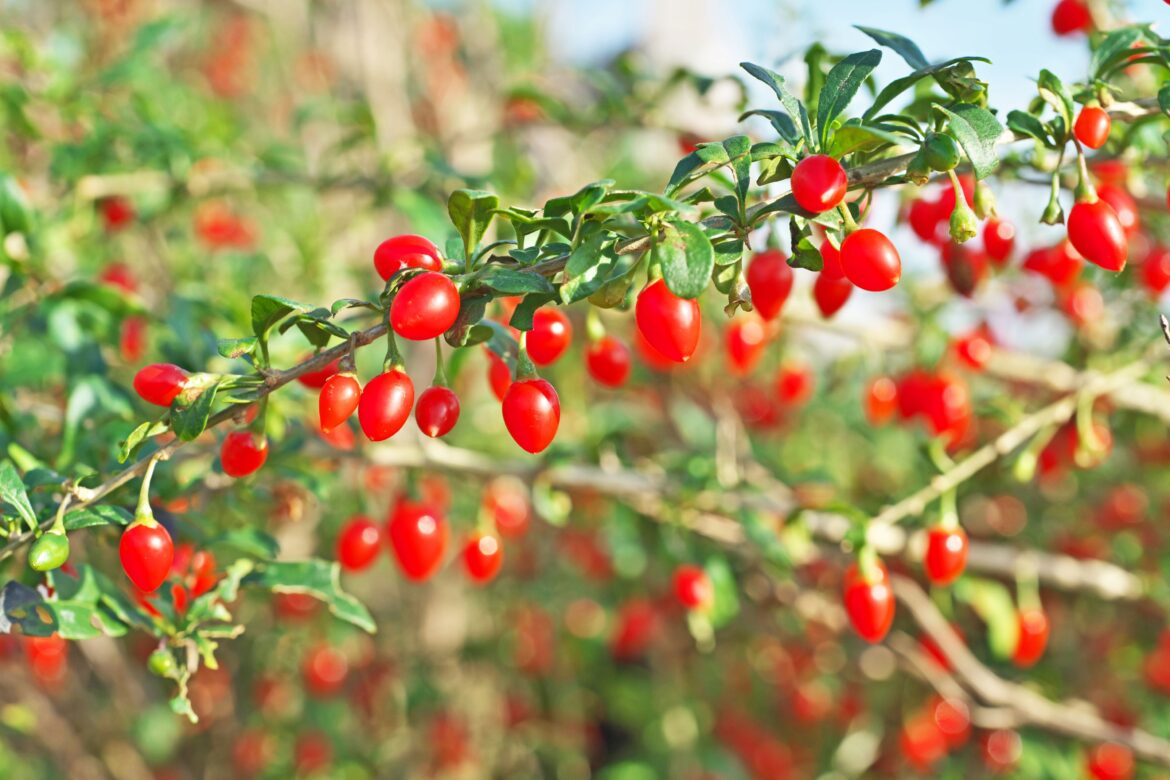The growing season may be winding down for the year, but that doesn’t mean that planting time is through. Cool autumn days are perfect for planting many perennials, including most of our favorite berry plants and shrubs. Here are 7 tasty types of berries that you can plant right now for a delicious spring or summer harvest.
Blueberries
Credit:
Laurie Black
Tart, sweet, and covered in a beautiful blue skin, blueberries are delicious in cobblers, jams, and lots of other sweet treats. For the tastiest, most flavorful blueberries around, grow our own!
Blueberries typically take about 2 to 3 years to fruit after planting. To speed up this process along by planting blueberries in autumn rather than spring. Just make sure to test your soil acidity before you plant these acid-loving plants, and do a bit of research on the type of blueberries that are best for your location. Highbush blueberries are larger plants that thrive in warmer climates, while lowbush blueberries make fantastic groundcovers and are especially cold-hardy.
Raspberries
Credit:
Jacob Fox
Like blueberries, raspberries can be planted in spring or fall, but autumn planting allows you to harvest raspberries earlier. To help your plants establish, make sure to get potted raspberries in the ground at least 4 to 6 weeks before frost is expected, or choose bare root canes, which are dormant and can be planted even later in the season, as long as the ground isn’t frozen.
You may also want to install a trellising system at planting time, which makes fast-growing raspberry canes much easier to manage.
Blackberries
Credit:
Bob Stefko
The growth habits and harvest times of blackberries are similar to raspberries. Blackberries are grown either from potted plants or dormant, bare-root canes, which are generally the best choice for fall planting. Blackberries will also benefit from sturdy trellising. Most blackberries fruit on second-year canes, which means you may need to wait a year or two to start harvesting, but these plants are prolific producers; a single plant may yield over 10 pounds of berries per year!
Strawberries
Credit:
Michael Hanson
Strawberries are not only for eating; with their low growth habit, they also make aesthetically appealing groundcovers in garden bed borders, or can be grown in pots. As with other berry plants, you can plant strawberries either in spring or fall. Planting them in the fall has the advantage that the wait for the first harvest is shorter, and you’ll be able to pick berries the following spring.
The earlier you plant strawberries in late summer or fall, the better. To give them time to set roots, plant them no later than 4 to 6 weeks before the expected first frost. Covering fall-planted berries with a few inches of weed-free straw mulch after planting is equally important. Remove most of the straw in spring before your strawberries start growing, but keep the crowns covered to protect them from late frost, and uncover that part last.
Potted strawberries may need to be wrapped with bubble wrap or another form of insulation to protect their roots from the cold and keep the pots from cracking.
Cranberries
Credit:
Avalon Studio / Getty Images
There’s a common misconception that cranberries are aquatic plants that only grow in bogs and other water-filled landscapes. But the reality is that flooding is only used to make large-scale cranberry harvesting easier. Cranberries grow in standard gardens, pots, or any place that’s suitable for blueberries.
The plants also require acidic soil, so always conduct a soil test before planting. Get potted cranberries in the ground at least a few weeks before fall frosts so they have enough time to establish before winter.
Goji Berries
Credit:
igaguri_1 / Getty Images
Hardy down to Zone 3, goji berries are easy-care plants that grow in a range of soils. The bushes produce antioxidant-packed berries from summer through the first fall frost. Although these plants, which are native to China, aren’t as well known as other berry shrubs, goji berries are often sold at health food stores. They can be eaten fresh or dried, depending on your taste.
Goji berries are usually sold in pots, rather than bare-root. Plant them at least 4 weeks before the first expected fall frost and add a thick layer of insulating mulch around their roots for the winter.
Currants and Gooseberries
Credit:
Kindra Clineff
Though currants and gooseberries aren’t as commonly grown as other berry plants, they make a fine addition to edible landscapes, as well as wildlife gardens to attract birds. These closely related plants have similar growing needs and tart fruit that’s perfect for pies, baking, and fresh eating.
Mail-order nurseries typically ship bare-root gooseberries and currants for spring planting. In the fall, you have a better chance of finding potted plants at local nurseries.
To plant either of these shrubs, dig a hole that’s slightly larger than your plant’s root ball, blend in some compost if needed, and set the shrubs at the same depth they were growing in their containers. Add 2 to 4 inches of mulch around their roots to keep the plants cozy during winter.


Comments are closed.